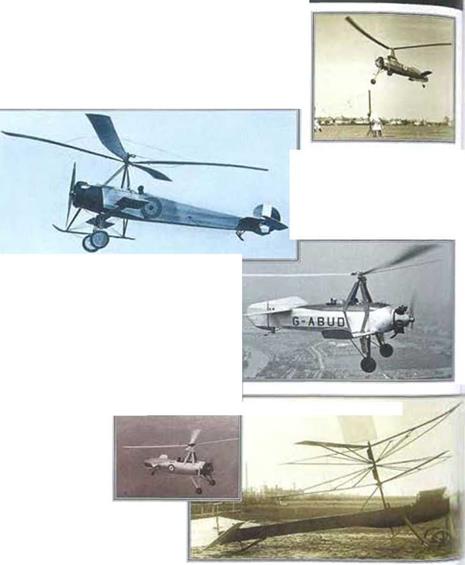Autogyros
• Rotary-winged aircraft • Spanish inventor • British manufacture
Juan de la Cierva was born in September 1895. He designed and built a glider when he was 15. and his first three – engined aeroplane in 1918. His true aim was to design an aircraft that would be able to maintain lift, and land safely after an engine failure. Practical helicopters wore impossible with the engines and materials thon available, so he turned to the concept of an aircraft using an unpowered rotor for lift and a conventional propeller for propulsion.

![]()

![]()

Commercial successes ►
The most commercially successful early design was the C. 19. the first purpose-built autogyro. Twenty-nine wero built.
Air Ministry craft ►
British Air Ministry interest in Cierva’s designs began in the 1920s with tho C.6. Avro was among several Bntish companies ovontually licensed to build autogyros. Tho RAF evaluated several prototypes, including C.6s. a C.8L and C. 19s. In 1934/35. 12 C.30AS were delivered.
FACTS AND
>- Twelve C.30As (designated Rota Mk I) were delivered to the RAF in tho 1930s, followed by 13 civil examples after 1939.
► Among prosorvod Autogyros is a Rota Mk I (C.30A) at the RAF Museum, London.
► British-built C.19s woro sold in countrios like New Zealand, Japan and Australia.
■4 First successes
With subsidies from tho Spanish government, Cierva built the C.6 series, using Avro S04K fusdagci Such was its success that Оспа established a company in the UK
FIGURES
>• During World War II, a Joep was fitted with a rotor and towod behind an aircraft, using the autogyro principle.
► Juan do la Cierva became the first autogyro passenger in a C.60 on 30 July 1927.
► In the late 1920s. Cierva learned to fly his own autogyros.
![]()

PROFILE











